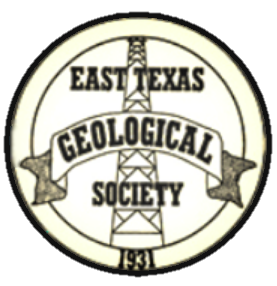OCTOBER 2015 LUNCHEON MEETING
Daniel M. Jarvie
of Worldwide Geochemistry
presents
"Petroleum Systems of the East Texas Basin Region"
11:30 AM Wednesday, October 21, 2015
at the Cascades
4511 Briarwood Road
Tyler, TX 75709
BIOGRAPHY
Dan Jarvie is a consulting organic geochemist specializing in assessment of unconventional shale resource systems. He has studied or been involved in evaluation of both conventional and unconventional petroleum systems around the world including Europe, Africa, Asia (China) and Australia. His work on these systems includes complete source rock analysis and assessments as well as detailed assessment of gas and oil. Read more.
ABSTRACT
"Petroleum Systems of the East Texas Basin Region"
by
Daniel M. Jarvie
While the various petroleum systems of the East Texas Basin Region (ETBR) are largely undocumented, there has been renewed interest with the development of unconventional resource systems. This situation is similar to other petroleum basins and, in particular, the Permian Basin of West Texas. The giant ETB discovered in the 20th century were prodigious petroleum producers, but its source is more by inference than data. The basin history for petroleum charge is strongly influenced by the presence of and movement of the Jurassic Louann Salt. Both the conductivity of the salt and its movement, both diapiric and withdrawal, affect the location of both traps and thermal maturity of source rocks.
There are the usual suspects for source rocks: Jurassic Smackover, Pearsall Group (Bexar and Pine Island), and Eagle Ford Shale, the latter two groups described in Westcott and Hood (1995) as Lower Cretaceous and Upper Cretaceous oil types, respectively. Unfortunately, guilt-by-association or antidotal evidence is not the best evidence. While various pieces of geochemical evidence point to a Oxfordian Smackover source, what data rule out the likelihood of Bossier and Haynesville shale as effective source rocks? The Smackover certainly has some source potential, but its ranking as a top source rock is questionable based on its organic richness as documented by Sassen and Moore (1988) (0.54%, n=537). Sassen and Moore (1988) also documented four immature Smackover rocks having an average TOC of 1.22% with excellent average hydrogen indices (HI) of 488 mg petroleum potential/g TOC. Based on these average HI and TOC values, the total petroleum generation potential is only 0.51 wt.% TOC. This only yields 137 barrels/acre-foot or at 78 ft., about 7 mmboe/section/78 ft, hardly a major source rock. On the other hand Bossier and Haynesville shales have elevated average TOC values even at high thermal maturity, and when immature, average over 5% with HI values of 500 and 700 mg/g, respectively (Jarvie et al., 2001). However, there do appear to be pods of source rock potential in all these Jurassic intervals that either enriched or diluted depending on their geographic position relative to salt withdrawal.
Cretaceous source rocks are obvious in the Eagle Ford Shale but other intervals including the Georgetown, Kiamichi/Goodland, Bexar and Pine Island. Tertiary source potential is present in the Wilcox and Midway, and a possible Triassic source rock (Eagle Mills) is inferred from oil chemistry.
